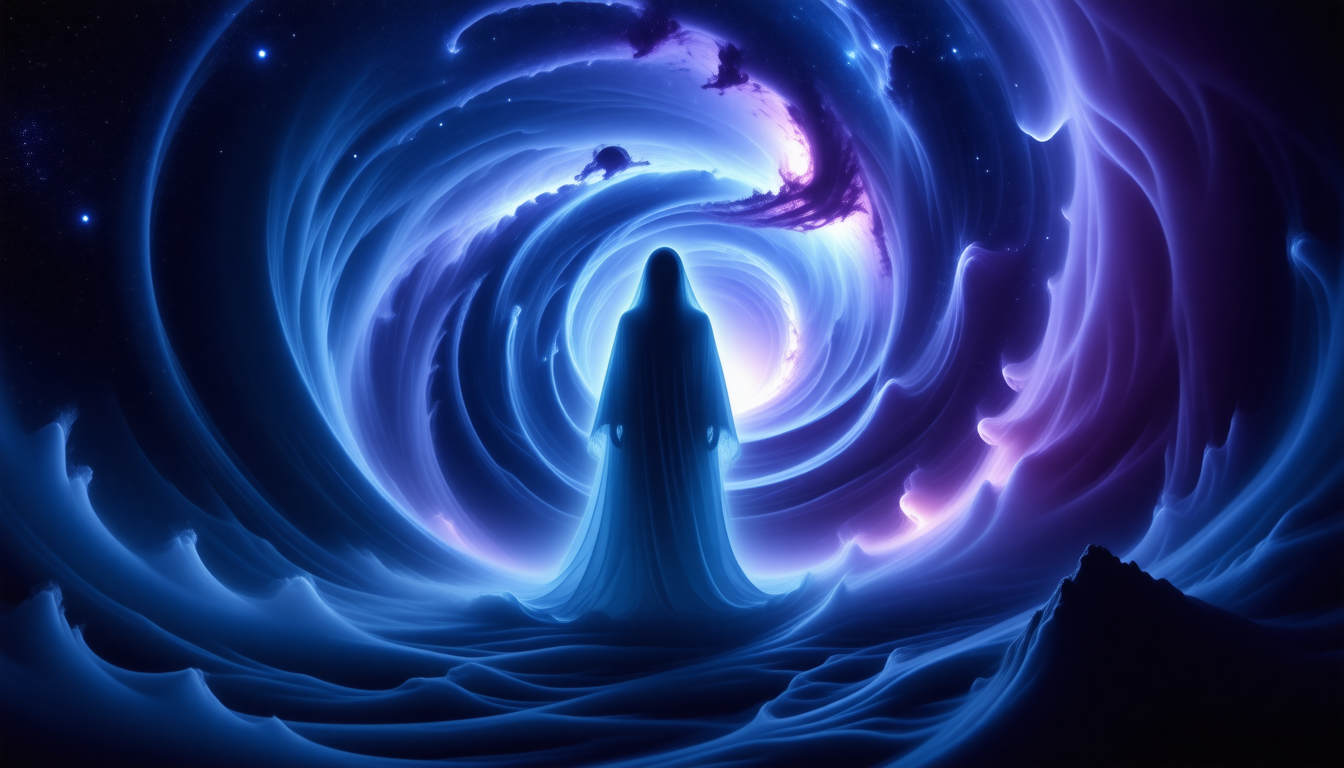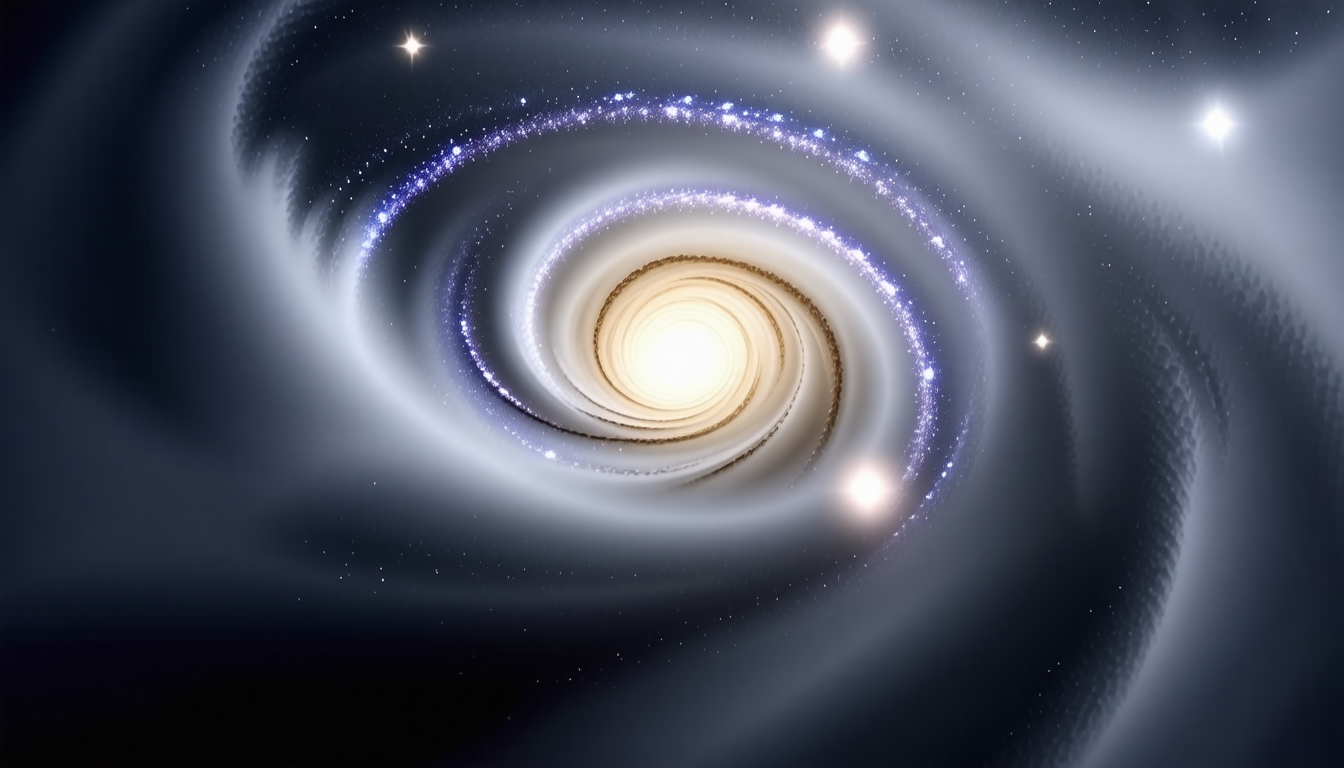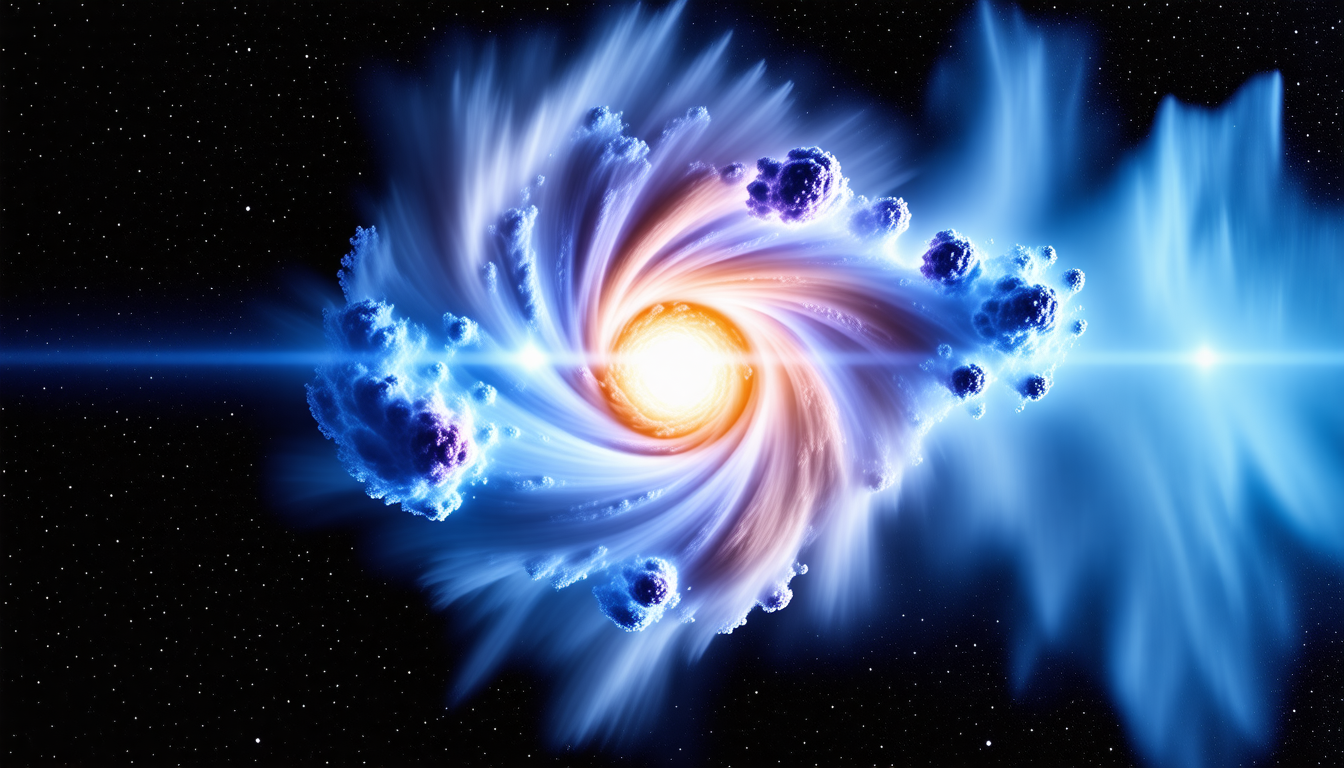The Terrifying Enigmas of the Cosmos

The dark mysteries of the universe
What if the universe is not only more mysterious than we can imagine but also more terrifying? Astronomers and physicists have long grappled with the understanding of dark matter and dark energy, two enigmatic components believed to comprise roughly 95% of the cosmos. These elements evoke a mixture of awe and fear; while they play pivotal roles in the formation of galaxies and the overall structure of the universe, their elusive nature and inscrutable properties challenge our comprehension of reality.
Dark matter, specifically, makes up about 27% of the universe. This ghostly substance does not interact with light, rendering it invisible to our most advanced telescopes and detection instruments. Rather, scientists infer its existence through gravitational effects on visible matter, such as stars and galaxies. The origins of the dark matter hypothesis reach back to influential observations in the 1930s when astronomer Fritz Zwicky examined the Coma Cluster of galaxies. He found that the visible matter couldn’t account for the fast movements of galaxies within the cluster, leading him to propose the existence of ‘missing mass.’ This fundamental discovery marked the beginning of dark matter’s journey into state-of-the-art cosmology.
Fast forward to the present, and various experiments and observational studies continue to shed light on dark matter’s properties. One compelling piece of evidence comes from the study of galaxy rotation curves. Instead of seeing a decrease in rotation speed at the edges of galaxies—criteria expected based on the visible mass—observations reveal that stars in the outskirts of galaxies are moving at unexpected, high velocities. This anomaly suggests that a significant amount of dark matter envelops these galaxies, providing the necessary gravitational pull to keep them intact and maintain their structure during rotation.
Scientists delve deeper into this cosmic mystery, raising profound questions about the origin and composition of dark matter. The front-runners in identification processes usually include Weakly Interacting Massive Particles (WIMPs), axions, or even primordial black holes formed shortly after the Big Bang. Each candidate not only bolsters our knowledge of the universe but prompts inquiries that could alter fundamental physics itself. For instance, the discovery of a particle that aligns with dark matter’s profile might unfold mysteries about gravitational forces linking it to other fundamental interactions. Such revelations could be instrumental in unlocking secrets about cosmic structure formation and evolution.
Conversely, dark energy, accounting for approximately 68% of the universe, serves an entirely different and equally haunting role. This mystifying force appears to be responsible for the accelerated expansion of the universe, driving galaxies apart at an accelerating rate. The evidence of dark energy emerged conspicuously from the study of distant Type Ia supernovae. When astronomers observed them, they found that they were dimmer than expected, revealing that they were much farther away than anticipated. This unexpected downshift in brightness not only confirmed the idea of an expanding universe but suggested that this expansion is increasingly swift, a baffling phenomenon indicating the presence of dark energy.
Today, theoretical models struggle to explain dark energy’s fundamental nature. Some scientists propose it to be a constant energy density permeating space, while others think that it might evolve over time or stem from the very fabric of space itself. The implications of dark energy extend far into the future, as its influence dictates the ultimate fate of the cosmos. Scenarios range from the ‘Big Freeze,’ where galaxies drift beyond the observable universe, leading to a dark, cold expanse, to potential alternatives where gravitational forces might regain dominance, causing a ‘Big Crunch.’
Dark matter and dark energy together paint a chilling portrait of our universe. They elicit feelings of both fascination and fear, urging humanity to explore realms previously considered untouchable. As scientists work to decipher the roles of these enigmatic components, they are confronted with complex philosophical inquiries regarding the very nature of reality, existence, and the fate awaiting us among the stars. The darkness surrounding these cosmic phenomena prompts a profound sense of humility; as we deepen our quest for such knowledge, we recognize the fragile threads connecting us to the enigmatic tapestry of our universe.

The frightening nature of cosmic anomalies
As we peer deeper into the cosmos, the haunting beauty of cosmic anomalies emerges, captivating our minds while at the same time instilling a sense of trepidation. Cosmic phenomena like gamma-ray bursts, supernovae, and rogue planets present scenarios not just of intrigue but also potential existential threats. These events and entities challenge the very fabric of our understanding, showcasing the universe as a place fraught with both wonder and danger. When we ponder the catastrophic energies unleashed in a supernova—the death throes of massive stars that can outshine entire galaxies for brief moments—we are reminded of the raw power of the universe. A cosmic explosion of this magnitude can shake the very foundations of nearby systems and, should it occur within relative proximity, the consequences for Earth could be dire.
Gamma-ray bursts (GRBs) present another layer of horror wrapped in awe. These bursts represent the most energetic explosions in the universe since the Big Bang, emitting radiation that, if aimed directly at Earth, could strip away our atmosphere and expose life to destructive cosmic rays. The probability of being impacted by such a phenomenon is exceptionally low; however, the potential outcomes can provoke severe consequences. GRBs signal the energetic transitions in the universe—often linked to the collapse of massive stars or the collision of neutron stars—and studying them not only reveals vast distances but offers insight into the formation of heavy elements essential for life as we know it.
The universe, however, does not merely consist of stars and explosions. It hosts rogue planets, those planetary vagabonds drifting through the voids of space without the tether of a parent star. Unlike planets in stable orbits, rogue planets can disrupt established systems when they wander close enough to influence the gravitational dynamics of nearby celestial bodies. The very existence of these lonely wanderers prompts questions about how many others lurk undetected in the cosmic dark. As a rogue planet approaches a solar system, it could lead to chaotic events: inner planets being flung into eccentric orbits, potential collisions, and even the ejection of these celestial bodies from their systems. The gravitational interactions associated with these rogue entities underline the delicate balance within our cosmic neighborhoods, making us acutely aware of the volatile nature of our environment.
Furthermore, gravitational waves—ripples in spacetime produced by merging black holes or neutron stars—unlock yet another spectral dimension of cosmic terror. The detection of these waves models a new era of astronomy. Instead of merely observing the cosmos through light, scientists now study its vibrational echoes, providing poignant insights into events that have occurred eons ago. By analyzing these waves, researchers grasp the magnitudes of these celestial collisions and bolster our understanding of black hole dynamics, potentially igniting new inquiries into the fundamental nature of gravity itself.
While the study of cosmic anomalies fuels our relentless curiosity about the universe, it sheds light on our own vulnerabilities. As societies become increasingly reliant on technology, the knowledge of cosmic threats holds a mirror to our own environmental challenges. With each new discovery—be it from understanding the chaotic nature of a supernova or the unpredictability of rogue planets—we find reason to address our Earth with greater respect and urgency. The very principles governing the cosmic backdrop also apply to our planet. Our climate, ecosystems, and the intricate dance of our atmosphere are influenced by the celestial forces at play.
In essence, as we grapple with the nature of these terrifying cosmic phenomena, we are at once drawn into an exploration of our own fragility. The terrifying possibilities that lie beyond our planet compel us to foster both a collective curiosity and a proactive approach to safeguarding our world against the unforeseen. It’s through the examination of these cosmic anomalies that we can cultivate a deeper understanding of our existence, urging humanity to embrace the unknown while preparing wisely for the myriad of possible futures that the cosmos has in store.

The implications of discovering extraterrestrial life
The implications of discovering extraterrestrial life extend far beyond scientific curiosity; they challenge our concepts of existence, identity, and what it means to be human. The very thought that life could exist beyond the confines of Earth reshapes our narrative within the cosmos. This momentous revelation would prompt profound philosophical discussions about our place in the vast universe, lending weight to the ancient question: Are we alone?
If intelligent extraterrestrial beings were to be discovered, the ramifications would reverberate across disciplines—science, philosophy, and even theology. Our self-perception as the apex of evolution may be profoundly altered. After centuries of anthropocentrism, humanity would be compelled to confront the fact that we are just one small segment of a much larger evolutionary tapestry. This humbling realization could provoke a shift in societal paradigms, embracing the notion that intelligence, creativity, and consciousness are not unique to us.
Furthermore, the discovery raises essential ethical questions. If we find that intelligent civilizations exist, how do we engage with them? The potential for direct contact induces both excitement and trepidation. Discerning the intentions of these beings may be difficult, and the implications for interstellar diplomacy become a compelling arena for debate. Could a harmonious coexistence be possible, or would we perhaps encounter technologically advanced civilizations that pose risks of conflict? The realities of communication across vast distances and potential misunderstandings present immense challenges, urging us to carefully consider our outreach strategies.
Additionally, the existence of extraterrestrial life could lead to the development of new regulatory and governance frameworks. The prospect of contact might require humanity to unite under common regulations protecting both ourselves and any discovered sentient beings. How do we ensure mutual respect and navigate the intricacies of cultural exchange when faced with entirely different expressions of life? These inquiries could redefine global governance, pushing nations towards collaboration in the face of a universal challenge, rather than competition.
Scientifically, the discovery of extraterrestrial life forms on planets with conditions vastly different from those on Earth would expand our understanding of biology. This could lead to remarkable insights regarding the adaptability and resilience of life itself. Instead of solely relying on molecular biology as a basis for understanding life’s origins, we might uncover new biochemical processes that reveal life’s versatility. Concepts of evolution could be rewritten, urging scientists to reconsider how parallel evolutionary paths could lead to diverse forms of intelligence.
Moreover, as we expand our understanding of biology, the need for interdisciplinary studies will grow. Those studying potential extraterrestrial life will likely collaborate with astronomers, evolutionary biologists, and even social scientists to bridge the gaps in knowledge about unknown forms of existence. An increased understanding of how life on Earth interacts with its environment might inform our exploration of alien ecosystems, potentially providing crucial learnings about survival strategies in different cosmic contexts.
The search for extraterrestrial intelligence (SETI) already exemplifies the blend of scientific inquiry, technological advancement, and philosophical introspection. As we enhance our monitoring capabilities through state-of-the-art technology, we may one day detect signals that challenge our preconceptions of communication and interaction. Any discovered signal would not only confirm that we are not alone, but it would demand an analysis of the underlying motivations behind the transmission. Were they used to seek out contact or sent as a warning? Understanding context plays a pivotal role, and the implications of these discussions could redefine our communication norms—both among ourselves and with any potential extraterrestrial beings.
Finally, the readiness to process information concerning extraterrestrial life should be seen as a collective endeavor. Education systems, media, and various social platforms have a role in preparing publics for such a possibility. As dialogues unfold regarding the implications of contact, a framework rooted in inclusivity and global community-building becomes paramount. We must cultivate an understanding that fosters curiosity rather than fear, uniting humanity in a shared exploration of our place amidst the stars.
Thus, the discovery of extraterrestrial life stands to create ripples across science, ethics, and society. Preparing for that eventuality not only enriches our understanding of the universe but also encourages us to reflect on our narratives, identities, and projections into the cosmic future. Our quest for knowledge, humility, and cooperative spirit may guide us toward a brighter, united interstellar presence, forever reshaping our connection with the cosmos.